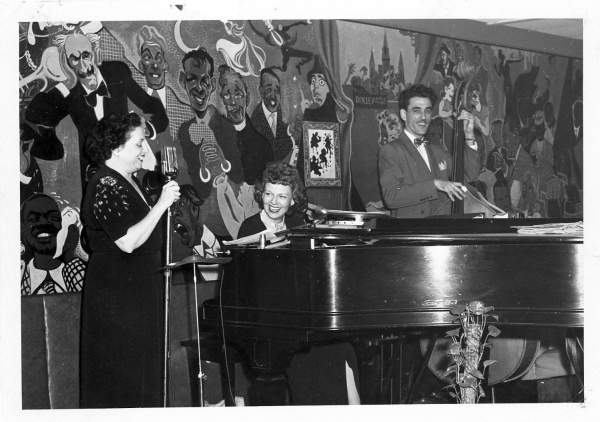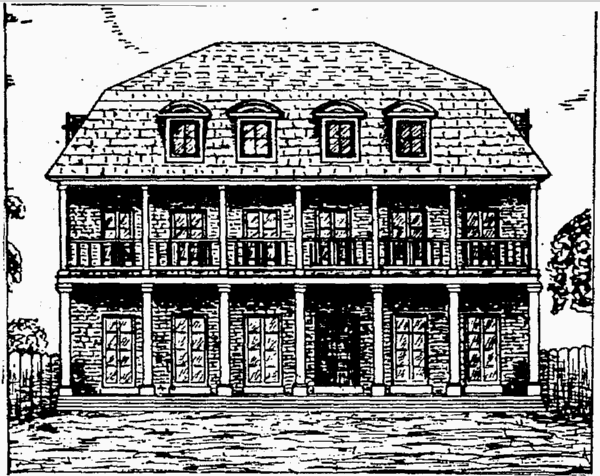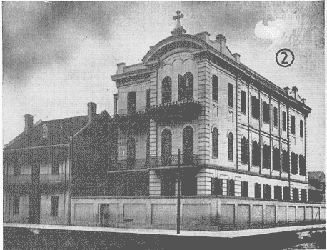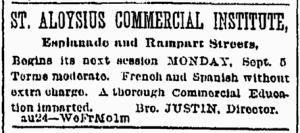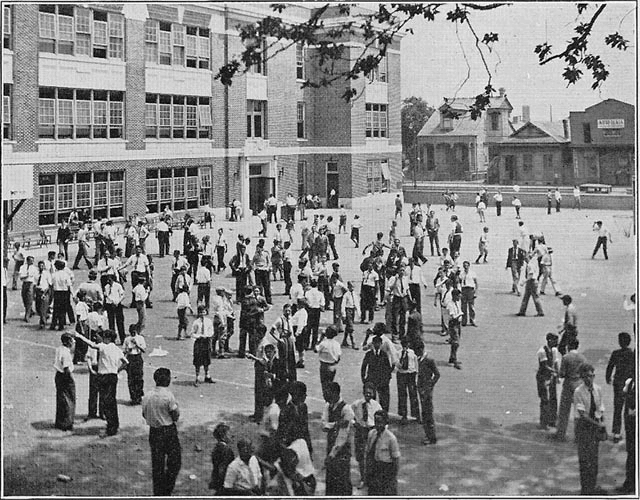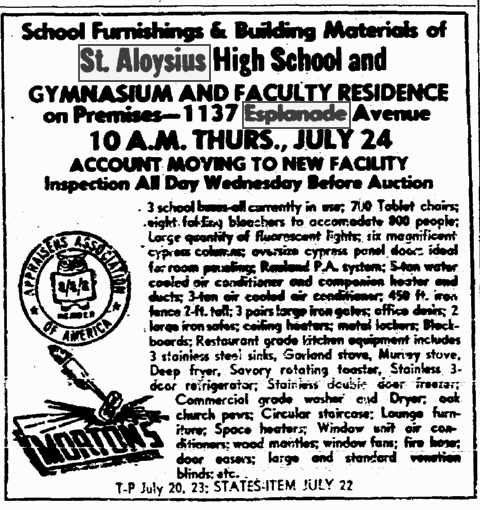|
Today in New Orleans History |
|
|
September 26


 To receive an update for each day in New Orleans history,
join our facebook page - Today in New
Orleans History.
Jazz
musician Dorothy Sloop (also known as Dorothy Sloop Heflick) was born in Steubenville, Ohio on September 26, 1913. During
her performing years, she was best known as a pianist with a number of all (or mostly) female jazz bands in the New Orleans
area, primarily from the 1930s through the 1950s. She recorded an album, Dixie and Sloopy, in 1957 with Yvonne "Dixie"
Fasnacht, a jazz vocalist and clarinetist who operated Dixie's Bar of Music on Bourbon Street. Sloop retired to Florida
and became a teacher. She died in Pass Christian, Mississippi at age 84 on July 28, 1998. Her name is now commonly associated
with the song "Hang on Sloopy", performed by The McCoys and other artists during the 1960s, as it is alleged that
Dorothy was the inspiration for the song. This song is now the official rock song of the U.S. state of Ohio, and it is performed
often by the marching band of The Ohio State University and at Progressive Field where the professional baseball team the
Cleveland Indians play. (Wiki)  To receive an update for each day in New Orleans
history, join our facebook page
- Today in New Orleans History
Eugene Charle Sykes (born September 26, 1941 in New Orleans,
Louisiana) American Football League defensive back. scored a touchdown in LSU's 25–7 defeat of Colorado in the
1962 Orange Bowl. In 1963 he appeared with the LSU team in the Cotton Bowl, where they defeated Texas
13–0, and in the Hula Bowl All-Star Game. As a professional, Sykes was drafted by the American Football League's Buffalo
Bills, playing for them in 1963 and for their AFL Championship teams of 1964 and 1965. He finished his Professional Football
career with the AFL's Denver Broncos in 1966.
Born on September 26, 1918, Fred James Cassibry received a B.A. from Tulane University in 1941 and
an LL.B. from Tulane Law School in 1943. After serving in the Navy during World War II he became a field examiner for the
National Labor Relations Board from 1946 to 1948. He entered private practice in New Orleans from 1948 to 1961, and was a
New Orleans City Councilman from 1954 to 1961. He was a judge on the Civil District Court for Orleans Parish from 1961 to
1966. On October 11, 1966, Cassibry was nominated by President Lyndon B. Johnson to a new seat on the United States
District Court for the Eastern District of Louisiana created by 80 Stat. 75. He was confirmed by the United States Senate
on October 20, 1966, and received his commission on November 3, 1966. He assumed senior status on March 15, 1984, serving
in that capacity until his retirement on April 3, 1987. He died on July 6, 1996.
Camille D'elmar (1861 – September 26, 1902) was a stage actress and opera performer
from Rochester, New York. When she was six years old D'elmar appeared with Joseph Jefferson in Rip Van Winkle at the
Varieties Theater in New Orleans.
St. Aloysius Opens on Chartres at Barracks Street Father Andre’ Coindre, founder of the Brothers of the Sacred Heart, was born in Lyons, France
in 1787. Devoting his life to the restoration of the Church following the Reign of Terror at the end of the French Revolution,
his chief mission became the moral, intellectual and religious development of young orphan boys left in distress by the
disintegration of family life following the Revolution. In 1821 he formed the Brothers of the Sacred
Heart to further his efforts, resolving to establish a community of Brothers trained to work for the poor through the establishment
of schools. Following the death of Father Coindre in 1826, the efforts of Brother Polycarp, the first Brother Superior General
of the Institute, led to tremendous growth. By the time of his death in 1859, the Institute had grown to over 400 Brothers
and 70 schools. In January of 1847, five missionary Brothers of the Sacred Heart arrived in Mobile,
Alabama at the request of Bishop Portier to do charitable and educational work. With their arrival in America the congregation
began its transformation into a worldwide institute comprised of many nationalities. In 1869 New
Orleans Archbishop Jean-Marie Odin invited the Brothers to open a school in New Orleans. St. Aloysius opened on September
26, 1869 with three brothers and six students. By the end of the school year enrollment had climbed to 60 students.
The school was located at Chartres and Barracks Streets (drawing above right), the current site of the Richelieu Hotel. In 1892 the school was moved into a larger building on the corner of Esplanade Avenue and Rampart
Street where it remained until demolished in 1925 when Rampart Street was widened. The new school building was opened at
1137 Esplanade Avenue (image 2) in a building which had been erected by the Ursuline Nuns who ran a school there. Brothers
of the Sacred Heart purchased it for $75,000. The 1925 enrollment included 500 students and would ultimately grow to
980 during the next forty-four years. Over 5,000 young men graduated from St. Aloysius during its 100-year history. The
September 7, 1892 Daily Picayune advertisement (on ther right) announces the (then) new location. The widening of North Rampart Street required that the building be demolished. In 1925 the final St. Aloysius
school site was built at the the same location -- set back further from the street. |
|
|

To receive an update for each day in New Orleans history,
join our facebook page - Today in New
Orleans History.
Analytics |
